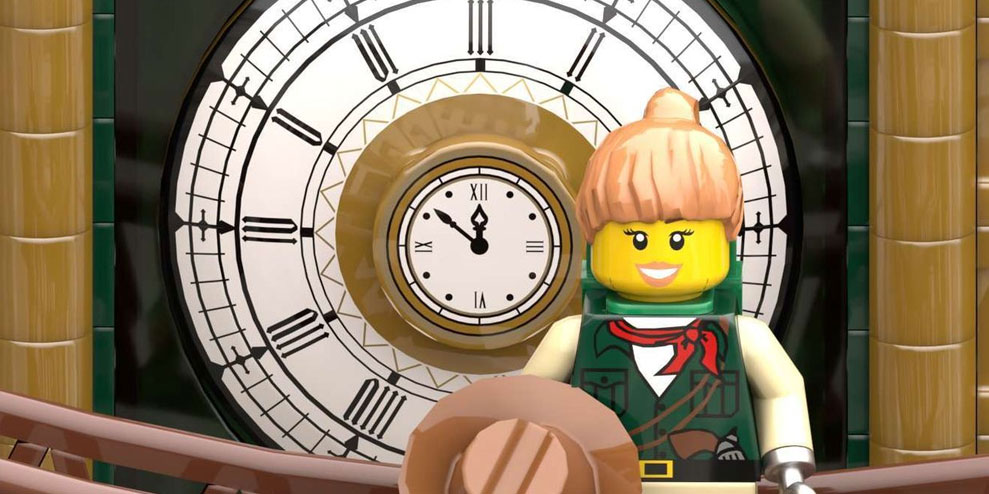Lego’s Next Build: Worlds and Characters Created by Its Fans
Seeking ideas for TV shows, digital videos and toy sets, Lego A/S is asking people to share their imaginings on a new platform set up for that purpose.
Called Lego World Builder, the platform lets users propose story worlds, characters and other ideas by uploading concept art, videos and descriptions. Lego said it will buy the ideas it likes.
Entertainment has long been important to the $21 billion toy industry, which also sells playthings based on popular Hollywood franchises as well as making TV series and movies about its own wares. Licensed “Star Wars” toy sets helped Lego rebound from near-bankruptcy in the early 2000s, while the success of “The Lego Movie” in 2014 helped usher in new products and an increase in revenue.
But content—stories featuring toys—has become central as toy makers vie for children’ attention against videogames, YouTube and social media.
“It’s a different world with so many choices for children,” said Chris Byrne, an independent toy-industry consultant and analyst. Lego’s most ardent fans will stay engaged on Lego World Builder, as the company mines them for ideas to reach consumers across a fragmented media landscape, he added.
Lego has budgeted $500,000 a year for at least the next three to pay the platform’s users when it likes their submissions, said Keith Malone, the company’s senior director of entertainment development. To option an idea—meaning Lego will try to develop it—the company will pay $10,000, he said. If it decides to buy the idea outright, it will pay $50,000. Those pitching ideas must be at least 18 years old.
Lego’s theatrical film development business won’t be involved in the new digital platform.
Consumers are already on platforms such as Wattpad, a site where users post their own writing, with stories about Lego characters such as the ninjas of its “Ninjago” franchise.
If one searches for Ninjago on Wattpad, “there are hundreds and hundreds of pages of stories that people are writing,” Mr. Malone noted.
Wattpad Corp. connects some of its users with publishing houses or media companies for books or adaptations, but Lego’s new platform opens a direct line to the company’s fans.
This isn’t Lego’s first attempt at crowdsourcing. Its Lego Ideas program allows people to submit ideas for new toys. If an idea is approved, the company will build and release the toy, paying the creator a royalty fee of 1% of total net sales.
Lego World Builder is meant to source and develop franchises instead of individual toy sets. “If we love a world about ‘Alien Mermaid Princess,’ we could make content, toys, attractions at our parks, etc., based on that concept,” Mr. Malone said.
Lego developed the new effort with Los Angeles-based tech company Tongal Inc., which operates a platform to connect creative talent with content companies and advertisers.
Crowdsourcing through Lego World Builder will allow the company to gradually develop new franchises, said James DeJulio, chief executive of Tongal. A popular idea on Lego World Builder, for example, could lead to a video or series on YouTube—and if that is successful, something more, he said.
“You start to get closer to the audience in the development process,” Mr. DeJulio said.
Tongal has worked with Lego since 2012, playing matchmaker between creative talent and the brand on 183 projects. They include short videos distributed on platforms like Netflix Inc. and YouTube, owned by Alphabet Inc.’s Google.
Lego World Builder could also enlist fans while avoiding a pitfall common in unsolicited pitches: lawsuits over intellectual-property rights.
“Most brands and studios do not take unsolicited submissions because it could lead to all sorts of problems,” said William Finkelstein, a veteran IP lawyer and former vice president and intellectual property counsel at PepsiCo Inc.
“Unfortunately, the result is that this makes it difficult for a lot of independent creators who are not employees of a company, but who may have some great ideas, to get those ideas to those content companies and brands,” he said.
Eighty-five of the 208 beta testers of Lego World Builder do not work in creative fields, according to Tongal.
Lego has bought two projects from the beta testers, including a three-minute animated video tied to “Ninjago.” The premise lays out various “what-if” scenarios set in the Ninjago universe.
“It’s from a young man who is a student in Canada,” Mr. Malone said.
–
This article first appeared in www.knowledge.wharton.upenn.edu
Seeking to build and grow your brand using the force of consumer insight, strategic foresight, creative disruption and technology prowess? Talk to us at +971 50 6254340 or mail: engage@groupisd.com or visit www.groupisd.com/story




